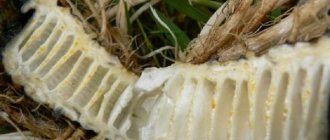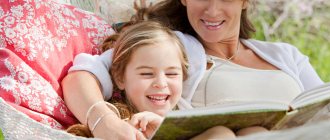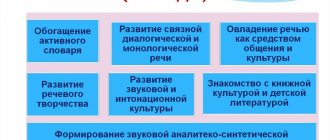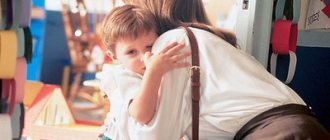Motor mode model for all age groups
Health care – to ensure the protection of the life and promotion of the child’s health. Contribute to the improvement of all functions of the child’s body.
Educational – to form the foundations of physical culture. To form in children initial ideas about healthy lifestyle.
Educational – to cultivate interest in various types of motor activities. To promote the development of positive volitional qualities in the child.
| Motor mode model for all age groups | Junior groups | Middle groups | Senior groups | Preparatory groups |
| Morning exercises | Daily 5-6 min. | Daily 6-8 min. | Daily 8-10 min. | Daily 10-12 min. |
| Physical education minutes | 2-3 min. | 2-3 min. | 2-3 min. | 2-3 min. |
| Music classes | 2 times a week 15 min. | 2 times a week 20 min. | 2 times a week 25 min. | 2 times a week 30 min. |
| Physical education classes (2 indoors, 1 outdoors) | 3 times a week 15 min. | 3 times a week 20 min. | 3 times a week 25 min. | 3 times a week 30 min. |
| Outdoor games: - plot games; - plotless; - fun games; - competitions; - relay races. | Every day at least two games for 5-7 minutes. | Every day at least two games for 7-8 minutes. | Every day at least two games for 8-10 minutes. | Every day at least two games for 10-12 minutes. |
| Health activities: - awakening gymnastics - breathing exercises | Daily 5 min. | Daily 6 min. | Daily 7 min. | Daily 8 min. |
| Physical exercises and game tasks: - articulation gymnastics; — finger gymnastics; - visual gymnastics. | Daily, combining exercises of your choice for 3-5 minutes. | Daily, combining exercises of your choice for 6-8 minutes. | Daily, combining exercises of your choice for 8-10 minutes. | Daily, combining exercises of your choice for 10-15 minutes. |
| Physical education | Once a month up to 15 min. | Once a month up to 20 min. | Once a month up to 30 min. | Once a month up to 40 min |
| Sports festival | 2 times a year up to 30 min. | 2 times a year up to 45 min. | 2 times a year up to 1 hour | 2 times a year up to 1 hour |
| Independent motor activity of children during the day | Daily. The nature and duration depend on the individual characteristics and needs of the children. Conducted under the guidance of a teacher. | |||
Motor mode of the younger group
| Kind of activity | Duration |
| Morning exercises | Daily in a group (in the warm season - on site), 5 min |
| Motor warm-ups | Every day during 10 min. break between classes |
| Physical education minutes | Daily during static exercises, 2-3 min. |
| Outdoor games and exercise while walking | Daily 15-20 min. |
| Individual work on movement development | 2 times a week for a walk of 5-10 minutes. |
| Exercising after a nap | Daily 5-6 min. |
| Physical education classes | 2 times a week for 15 min. |
| Sports walk | 3 times a week for 10 -15 minutes |
| Physical education | Once a quarter, 20-25 min |
| Independent motor activity | Every day, under the guidance of a teacher, indoors and on a walk, the duration depends on the individual characteristics of the children |
Motor mode of the middle group
| Kind of activity | Duration |
| Morning exercises | Daily in a group (in the warm season - on site), 5-6 minutes |
| Motor warm-ups | Every day during a 10-minute break between classes |
| Physical education minutes | Daily during static exercises, 2-3 min. |
| Outdoor games and exercise while walking | Daily 15-20 min. |
| Individual work on movement development | 2 times a week for a walk of 5-10 minutes. |
| Exercising after a nap | Daily 5-6 min. |
| Physical education classes | 2 times a week for 20-25 minutes. |
| Sports walk | 3 times a week for 15-20 minutes |
| Physical education | Once a quarter, 20-25 min |
| Sports holiday | 2 times a year, 45 min. |
| Independent motor activity | Every day, under the guidance of a teacher, indoors and on a walk, the duration depends on the individual characteristics of the children |
Motor mode of the senior group
| Kind of activity | Duration |
| Morning exercises | Daily in a group (in the warm season - on the site), 6-7 min. |
| Motor warm-ups | Every day during a 10-minute break between classes |
| Physical education minutes | Daily during static exercises, 2-3 min. |
| Outdoor games and exercise while walking | Daily 20-25 min. |
| Individual work on movement development | 2 times a week for a 15-minute walk. |
| Exercising after a nap | Daily 5-6 min. |
| Physical education classes | 2 times a week for 30 minutes. |
| Sports walk | 3 times a week for 15-20 minutes. |
| Physical education | Once a month, 30 min |
| Sports holiday | 2 times a year, 1 hour |
| Independent motor activity | Every day, under the guidance of a teacher, indoors and on a walk, the duration depends on the individual characteristics of the children |
Motor mode of the preparatory group
| Kind of activity | Duration |
| Morning exercises | Daily in a group (in the warm season - on site), 6-7 minutes |
| Motor warm-ups | Every day during a 10-minute break between classes |
| Physical education minutes | Daily during static exercises, 2-3 min. |
| Outdoor games and exercise while walking | Daily 20-25 min. |
| Individual work on movement development | 2 times a week for a 15-minute walk. |
| Exercising after a nap | Daily 5-6 min. |
| Physical education classes | 2 times a week for 35 minutes. |
| Sports walk | 3 times a week for 20-25 minutes |
| Physical education | Once a month, 35-40 min. |
| Sports holiday | 2 times a year, 1 hour |
| Independent motor activity | Every day, under the guidance of a teacher, indoors and on a walk, the duration depends on the individual characteristics of the children |
Development of motor activity of preschool children in preschool educational institutions
Experience of a teacher in developing physical activity in children during the day (speech at the pedagogical council)
Today, in the preschool education system, special attention is paid to the health of children.
The health of children depends on a number of factors: biological, environmental, social and hygienic, as well as on the nature of pedagogical influence. Among the various factors influencing the health and performance of a growing organism is physical activity. Motor activity is a natural need for movement, the satisfaction of which is the most important condition for the comprehensive development and upbringing of a child. Only physical activity that is within the optimal range has a beneficial effect on the body. Thus, with physical inactivity (mode of inactivity), a number of negative consequences arise for the child: the functions and structures of a number of organs, the regulation of metabolism and energy are disrupted, and the body’s resistance to changing external conditions decreases. Hyperkinesia (excessively high physical activity) also violates the principle of optimal physical activity, which can lead to overstrain of the cardiovascular system and adversely affect the development of the child’s body. Therefore, our kindergarten provides a rational level of motor activity, which is achieved by improving the motor regime, since motor activity is determined not so much by the child’s biological need for movement, but by social factors : the organization of the pedagogical process, environmental conditions, upbringing and training. The motor activity of a preschooler must be purposeful and correspond to his experience, interests, desires, and functional capabilities of the body, which forms the basis of an individual approach to each child. Therefore, preschool teachers take care of the organization of motor activity, its diversity, as well as the fulfillment of the main tasks and requirements for its content. The content side of the motor regime should be aimed at developing the mental, spiritual and physical abilities of children. Therefore, when distributing the motor mode, we take into account: - the peculiarity of the preschool educational institution (preschool educational institution mode) - the individual characteristics of children, their age - health status - a differentiated approach All this helps to optimize the motor activity of children. The motor mode of our preschool educational institution includes all the dynamic activities of children, both organized and independent. The sanitary and epidemiological rules and regulations from the Russian Ministry of Health say that the volume of physical activity of pupils aged 3–7 years in organized forms of health-improving and educational activities should be provided for up to 6–8 hours a week, taking into account the psychophysiological characteristics of children, the time of year and the operating mode of the preschool educational institution. The motor mode model for preschool children consists of several blocks. 1. Physical education and health activities. 2. Training sessions. 3. Independent studies. 4. Physical education classes. 5. Additional classes. 6. Joint physical education and health work of the preschool educational institution and the family. The content and structure of preschool education classes is different, each of them, to one degree or another, has its own specific purpose. Morning exercises , exercises after a nap, walks to other areas of the garden, outdoor games and physical exercises while walking perform organizational and health-improving tasks. Physical exercises relieve fatigue in children and increase their mental performance. In classes, children learn, acquire the necessary skills, abilities, and knowledge. Health week, physical education, sports festivals are active recreation. Corrective gymnastics is intended for children with poor health. Depending on the purpose, all of the above types of activities and their nature change and are repeated at different intervals throughout the day, week, month, year, making up the health-improving motor regimen of preschoolers. Attaching particular importance to the role of physical activity in promoting the health of preschool children, we determine priorities in the daily routine. The first place in the motor regimen of the day belongs to physical education and health activities. These include well-known types of physical activity: morning exercises, outdoor games and physical exercises during walks, physical exercises in classes with mental stress, etc. In order to optimize physical activity and harden children in the practice of preschool educational institutions, we introduce additional physical activities related to a set of hardening measures, and also introduce non-traditional forms and methods of their implementation. Such activities include: healthy running in the air, jogging along massage paths in combination with air baths, gymnastics after naps, individual work with children on the development of movements and regulation of motor activity of children on an evening walk, walks - hikes in the forest, corrective gymnastics. The second place in the motor mode of children is occupied by physical education classes - as the main form of teaching motor skills and developing optimal motor activity in children. GCDs are held three times a week in the morning, two in the hall and one on the street. The third place is given to independent motor activity that occurs on the initiative of children. It gives wide scope for the manifestation of their individual motor capabilities. Independent activity is an important source of activity and self-development of a child. Its duration depends on the individual manifestations of children in motor activity, and therefore pedagogical guidance of independent activity is built taking into account the level of motor activity. Along with the listed types of physical education classes, active recreation and physical education and mass events are of no small importance in our preschool educational institution. These include a health week, physical education leisure, outdoor physical education and sports events, games and competitions, and sports competitions. The motor regime of older preschoolers also includes extra-group extracurricular activities (general physical training groups, clubs for various types of physical and sports exercises and games, dancing) and joint physical education and recreational work of the kindergarten and family (homework, physical education classes for children together with their parents , participation of parents in physical education and recreational public events of the preschool institution). The types of physical education classes described above, complementing and enriching each other, collectively provide the necessary physical activity for each child during the entire time he is in a preschool institution. It should be remembered that physical activity is optimal when its main parameters (volume, duration, intensity) correspond to the individual data of physical development and motor readiness of children, also when it is ensured in compliance with environmental conditions - natural, objective, social, rules alternating tension and rest, gradually increasing physical activity.
We recommend watching:
Learning to play basketball in the context of cooperation between educational institutions of various types Do-it-yourself sports equipment for a kindergarten Decorating a kindergarten site in winter Do-it-yourself physical education equipment for a kindergarten
Similar articles:
Features of the development of preschool children
MAGAZINE Preschooler.RF
Organization of motor activity of a preschooler in the daily routine.One of the most important tasks of our society is the formation of a viable, healthy younger generation.
Currently, in conditions of unfavorable environmental conditions and unstable social conditions, the problem of children's health is especially pressing.
One of the factors shaping a child’s health is physical activity. It is defined as the number of movements that the baby makes during the entire wakefulness.
Motor activity is understood as the total number of motor actions performed by a person in the process of everyday life.
Physiologists consider movement to be an innate, vital human need. Its complete satisfaction is especially important in early and preschool age, when all the basic systems and functions of the body are formed.
Doctors say that without movement, a child cannot grow up healthy. Movement, by their definition, can act as a preventative measure. In addition, movement is widely used as an effective therapeutic and corrective tool.
Physical activity has a positive effect not only on children’s health, but also on their overall development. Under the influence of movements, the emotional, volitional, and cognitive sphere of the baby develops.
Research by N. M. Shchelovanova and M. Yu. Kistyakovskaya shows: the more varied the movements a child performs, the richer his motor experience, the more information enters the brain, which contributes to more intensive intellectual development of the baby.
A variety of movements, especially if they involve the work of the hands, have a positive effect on speech development. (M. Koltsova).
Movement is a means of understanding the surrounding world and satisfying the biological needs of the body. It is difficult to overestimate the role of physical activity in expanding the functional capabilities of the developing organism and in improving motor activity. But lack of movement can lead to pathological changes in the body. According to regulatory documents regulating sanitary and epidemiological rules and regulations for preschool educational institutions, the maximum duration of continuous wakefulness for children 3-7 years old is 5.5-6 hours.
It is very important to rationally organize the regime in kindergarten so that children are in motion as much as possible. Physical education and health activities in kindergarten are carried out daily in accordance with the physical activity schedule. Their implementation is monitored according to the plan. The forms of physical education and health work have become more diverse.
In our preschool, in addition to morning exercises, exercises are carried out after sleep - “awakening exercises” . The exercises begin from a lying position, then sitting and gradually the children get up, doing the exercises near the bed. In addition, the preschool institution hosts sports and recreational activities and physical education events.
For hardening the body, regular physical training in order to improve the muscular system and respiratory system, morning exercises are very important. It is carried out in various forms: traditional, games, gymnastics using various objects.
A positive healing effect is possible with regular organized physical activity, which takes into account the principles of gradual, repeatable and systematic physical activity. Exercises to improve posture and develop spinal flexibility are mandatory.
To prevent fatigue and decreased performance, dynamic breaks are used. They help relieve tension in children during prolonged static stress. We also conduct physical education, finger and body games.
During the day, the walk is organized twice: in the morning and in the evening. A walk is a favorable time for carrying out individual work with children and organizing their independent physical activity. Games for the walk are selected taking into account the age of the children. Games should include various types of movements (running, throwing, jumping, etc.) and contain interesting motor game tasks.
Dosed running and walking for a walk is one of the ways to train and improve endurance, the most valuable health quality.
Relaxation exercises should be performed before napping. They are used to relieve tension in muscles involved in various activities.
In the second half of the day, more time is devoted to children’s independent motor activities, organized without the explicit intervention of the teacher. At the same time, it is necessary that children have at their disposal aids that stimulate a variety of physical activities. A physical education corner with a set of sports equipment (balls, hoops, bags, cords, ropes, ribbons, handkerchiefs, ribbed boards, etc.), caps for outdoor games, mats for the prevention of flat feet, a health track.
So, there is no task more important and at the same time more difficult than raising a healthy person. Raising a healthy child has been and remains a pressing problem in education and medicine. This problem in our kindergarten is solved through the interaction of teachers and parents. After all, a child’s health largely depends on the environment that surrounds him at home.
With proper organization of physical activity in the family and in kindergarten, the child grows and develops in accordance with his age. He has a good appetite, sleep, balanced behavior, positive forms of communication with adults and peers. His activities are varied and age-appropriate.
Literature:
1. Avchenko N. Honorary worker of general education of the Russian Federation, physical education teacher, child development center - kindergarten No. 2347, Moscow.
Journal "Preschooler's Health" No. 5, 2009, p. 18.
“How physical education affects the mental development of a child”.
2. Kirsanova N.V., teacher of the State Educational Institution of Secondary Professional Education, Penza Pedagogical Institute, Penza.
Magazine “Management of Preschool Educational Institution” No. 5, 2007. “Motor activity while walking in winter” , p. 76.
3. Makarova L.I., Ph.D. honey. Sciences, senior lecturer; Pogorelova I.G., Associate Professor, Department of Municipal Hygiene and Hygiene of Children and Adolescents, Irkutsk State Medical University, Irkutsk. Magazine "Physical Education Instructor" No. 2, 2010, p. 12.
“Motor activity in the full development of the child’s body”.
4. Osokina T.I. Physical education in kindergarten. — 3rd ed., revised. - M.: Education, 1986. “Methodological recommendations for outdoor games and physical exercises while walking ,” pp. 35, 79, 127, 194, 257.
5. Runova M.A. Motor activity of a child: A manual for teachers
| Next > |



